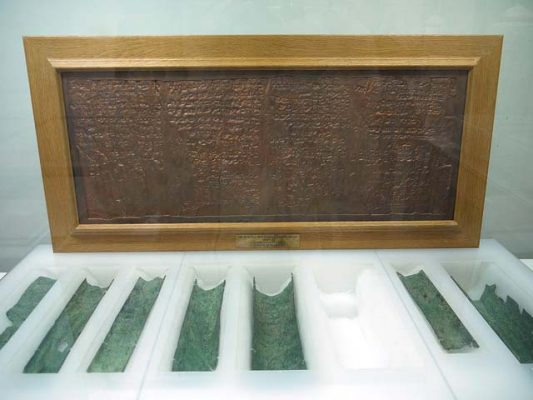
New Technology Could Change How We See The Bible
Researchers have found new information on the Dead Sea Scrolls using specialized technology. Originally developed for use by NASA, the infrared digitizing technique has revealed new writings on some of the parchments that are not visible to the naked eye.
Mysterious New Script Found In Dead Sea Scrolls [/tweetthis]
New Information Emerging About The Dead Sea Scrolls
The Israel Antiquities Authority, the group in charge of the new research, has discovered “traces of ink on many fragments” on the most famous of the Dead Sea Scrolls, the Temple Scroll. This latest development is significant because the writing on the fragments comes from a variety of different books of the Hebrew Bible. Namely, the newly discovered writings are believed to have come from Leviticus and Deuteronomy, some of the earliest books of the Bible.
Where Do The Dead Sea Scrolls Come From?
The Dead Sea Scrolls were discovered in 1946 by locals who lived near the Qumran Caves along with archaeologists researching in the area. Together, they were able to find several scrolls that led to decades of further research both in trying to find more scrolls and deciphering their meaning. Years of careful investigations led the examiners to find that the scrolls were actually up to 2,000 years old and had been preserved in the caves. The plethora of information that was obtained from the scrolls showed researchers pieces of scripture that were not included in the Bible as well as modified versions of stories and songs that were included. Overall, the Dead Sea Scrolls have been instrumental in creating a more complete history of the development of Abrahamic religions.
The Lasting Impact of The New Discoveries
The latest discoveries stem from an ongoing project to scan and digitize the thousands of fragments that were found in the Qumran caves in an effort to preserve them for future research. As previously mentioned, the newly-discovered texts have been attributed to books that already exist in the Bible. However, researcher Oren Ableman has found that one fragment is unique in that it does not share the same handwriting as other similar ones. Additionally, the writing cannot be successfully attributed to any other manuscript that is presently known from the Dead Sea Scrolls. In other words, the fragment could belong to an entirely new manuscript. This would be a significant discovery for the Dead Sea Scrolls and certainly a major discovery for investigators in this century. For now, research continues on the Dead Sea Scrolls in an effort to discover new information while racing against time to protect the scrolls for future generations.
